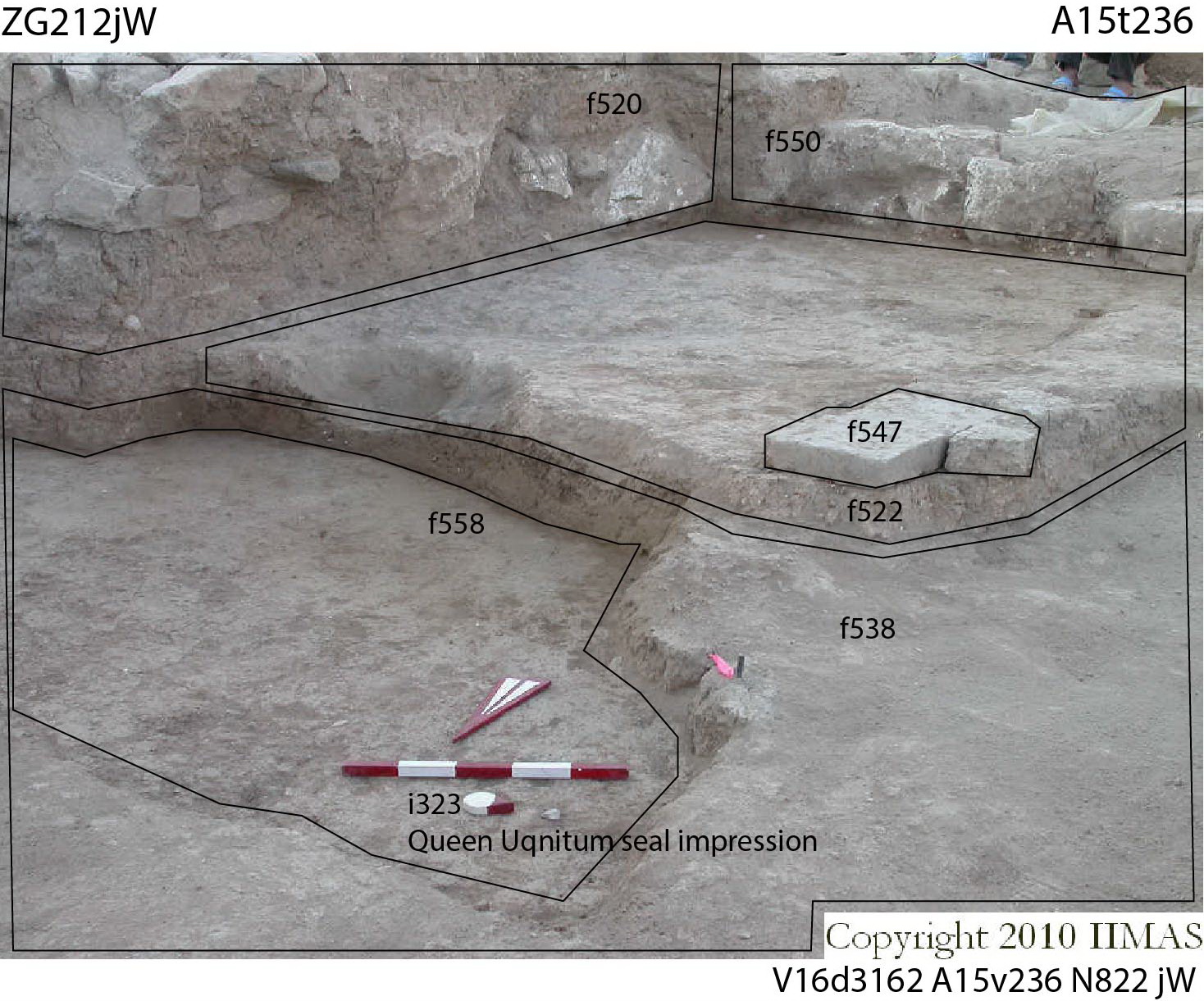Back to top: Stratigraphy/Elements
Summary
A plurality of features excavated (40%) were layers. Listed in descending order of frequency, they were designated as accumulations, layers, topsoil, lenses, and bands. Just as with other types of elements, these layers were altered by the numerous gullys that ran through A15.
Back to top: Stratigraphy/Elements
Notable layers
| An open-air industrial courtyard, a52, included many of the excavated features in the Khabur town. Although a few parts were later paved, f26, the entire surface, f107, consisted of compacted material including soil, sherds lying flat, and other discarded material. Clearly this constituted a "living floor" (Accumulation type A) that had built up as the courtyard was used. | 
| |
| The floor, f558, of the reception area for the palace courtyard, a41, was kept clean for as long as it was being used for ceremonial purposes. When that function was shifted elsewhere on the site, this space was used for routine activities. As such layers began to accumulate above the floor. The first accumulation, f533 contained a number of items including seal impressions and was Accumulation type A. Covering that was accumulation, f522, containing only sherds and was Accumulation type B. | 
|
Back to top: Stratigraphy/Elements
Accumulations
| Accumulations, a gradual buildup of soil and other materials deposited either as the result of sedimentation or human activities comprise seven eights of the layering excavated. Of them the majority were not specifically segregated by type. General erosion by gullys over several millenia either destroyed or otherwise altered the layers making specific analysis impossible. In particular it made it impossible to recognized naturally deposited accumulations. |
|
There were 139 undifferentiated accumulations that could not be further typed. There were 14 "living floors" Accumulation type A, 2 accumulations directly above "living floors Accumulation type B, 42 abandonment accumulations Accumulation type C, and 6 sedimentaion accumulations Accumulation type D. |
Back to top: Stratigraphy/Elements
Lenses, layers, and bands
| Lenses can be understood as small accumulations in a limited area. They are identified using the same system as accumulations (type a through type d). Bands and layers are intermediate-sized deposits, either naturally occurring or as a result of human activity. They are differentiated by the sharpness of their upper, lower, and side boundaries. There were 8 lenses of various types, 14 layers, and one band. |
Back to top: Stratigraphy/Elements
Topsoil
| Topsoil is a special category of layering almost always seen at the surface. Plants have sunk their roots into the surface soil and decaying vegetation darkens the color. Because of the extensive erosion, begun in antiquity and extending to the present day, topsoil features appeared only at the eastern and southern edges of the unit. There were 10 topsoil features. |
Back to top: Stratigraphy/Elements